Create Infinite Custom Ovoid and Pear Templates
May 12, 2021 13:09:36 GMT -5
mohs, rockjunquie, and 8 more like this
Post by opalpyrexia on May 12, 2021 13:09:36 GMT -5
Or perhaps more accurately: “Trace Custom Ovoid or Pear Shapes Directly on Your Slab”. An Ovoid shape is also called an “Egg shape”, and a Pear shape is also called a “Teardrop”.
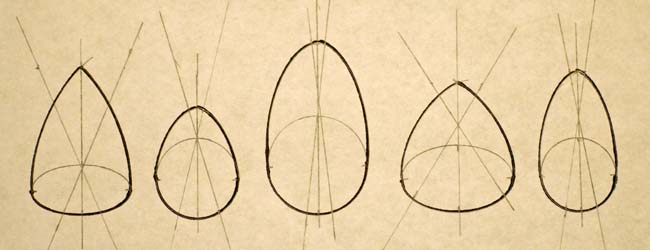
This was born of frustration by lacking the right template! So very frequently I find a pattern on a cab that calls out for a tapered shape. I have various templates but I have no good ovoid templates. I have a few that I’ve traced and cut out of plastic sheet with an X-acto blade, but they all have little symmetry issues. I also have a few pear templates, but they don’t ever seem to be the right size for the slab pattern that I’m interested in.
This procedure requires a circle template and an oval (ellipse) template. You can find used templates on eBay for reasonable prices. Any ellipse template will work for some shapes, but I find that templates in the range of 25° to 45° work best for most shapes.
You’ll also need to imagine that my paper in the photos is actually my slab. Because it creates unique shapes you can pretty much include exactly what you want in the cab and avoid much of what you don't want.
All these steps might seem complex, but once you’ve done it, it's really easy and fast.
Step 1: Using a straightedge mark the central axis of your cab-to-be.
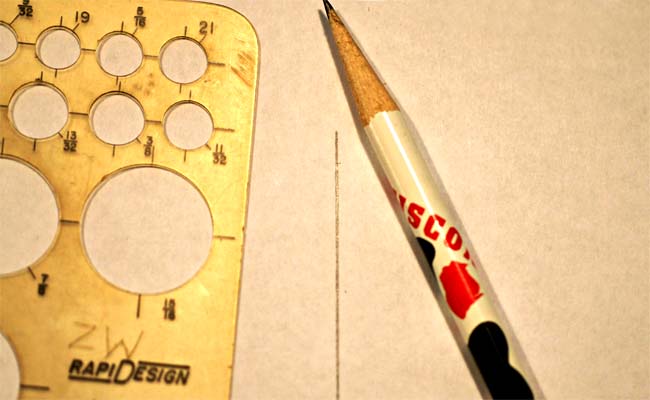
Step 2: Using a circle template mark the wide end of the cab. Circle templates usually have tick-marks or tiny holes to help in locating the center. Align one set with the cab’s axis and then mark the two perpendicular side locations.
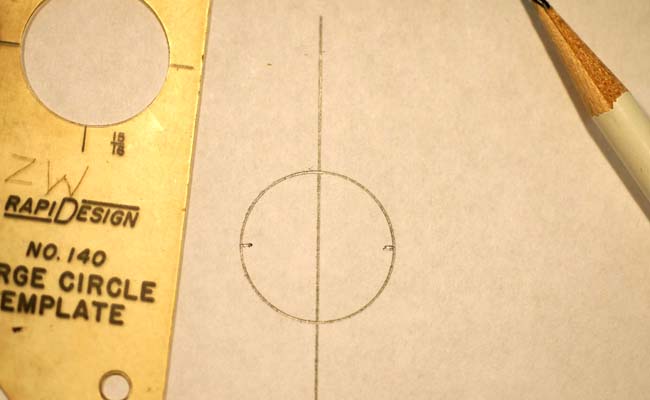
Step 3: Mark the narrow end or tip location of your cab on its axis.

Step 4: Choose an appropriate size oval template for the shape of your cab-to-be. You’ll need to make smooth arcs from the sides of your circle to the tip of the cab.
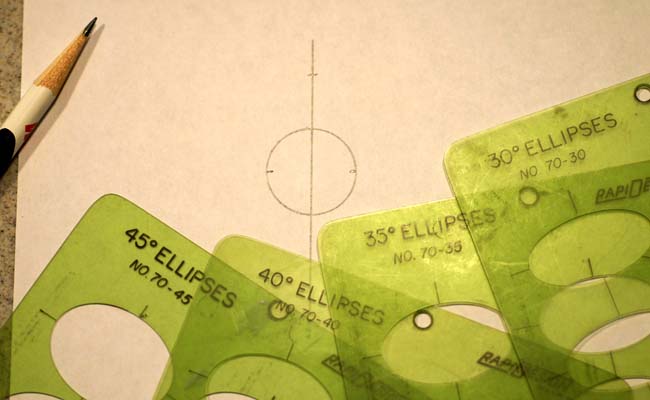

Step 3: Mark the narrow end or tip location of your cab on its axis.

Step 4: Choose an appropriate size oval template for the shape of your cab-to-be. You’ll need to make smooth arcs from the sides of your circle to the tip of the cab.

Step 5: Align your chosen oval with the side of the circle and the tip of your cab. Trace the side of the cab AND the top and bottom tick-marks of the oval.
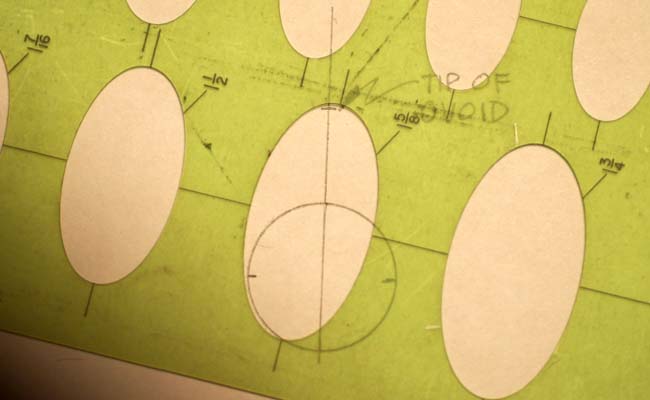

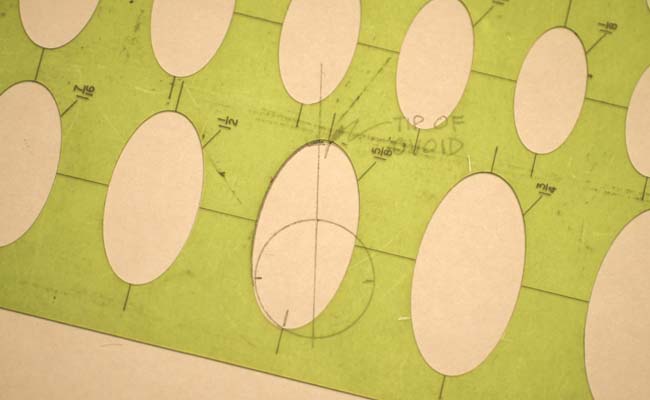
Step 6: Draw a line through the oval’s center using the top and bottom tick-marks.
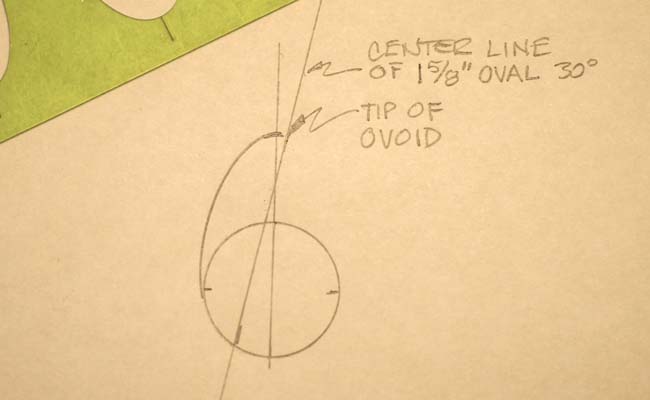
Step 7: Using the edge of a piece of paper held perpendicular to the cab’s axis, mark the distance from the oval’s center line (where it crosses the circle) to the cab’s center line. Transfer that distance to the other side of the cab’s circle and make a tick mark.
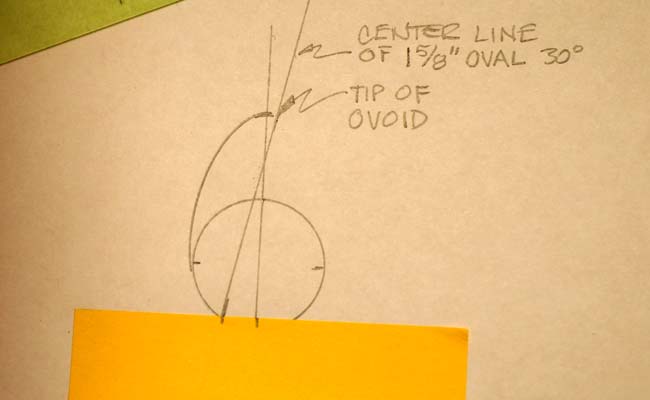
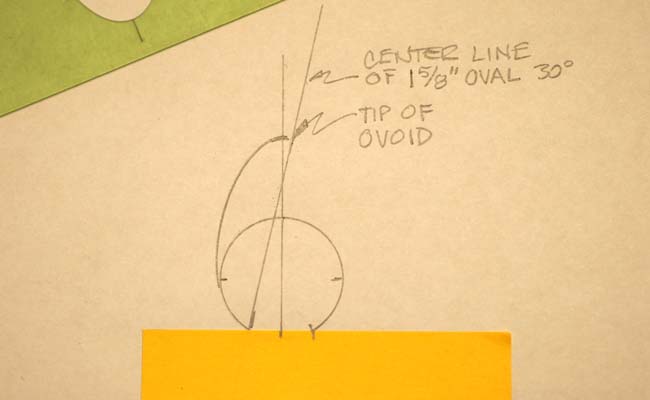


Now do the same at the top of the cab, but measure the distance to the right. Transfer that distance to the left of the cab's center line and make a tick mark. (NOTE: If the cab's center line extends beyond the tip, for greater accuracy measure and transfer a distance from a point higher up.)

Step 8: Mark a new straight line from the first (lower) transferred tick mark through the intersection of the oval’s original center line and the axis of the cab and through the second transferred tick mark at (or above) the tip of the ovoid. This new line is now the center line for the other (right) side of the oval template.

Step 9: Position your oval template on the new center line and mark the other side of the cab.

Step 9: Position your oval template on the new center line and mark the other side of the cab.
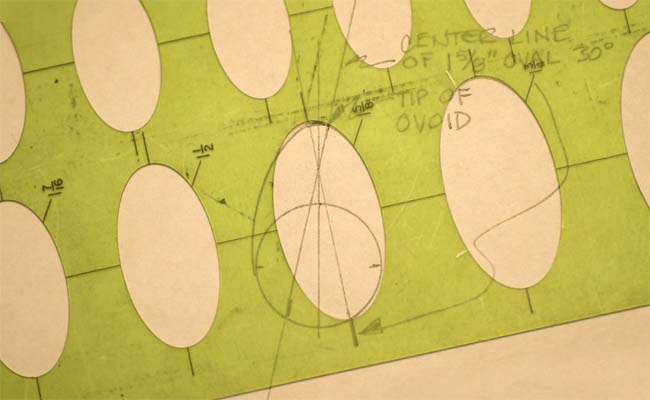
Step 10: Finished. Here I’ve used the templates to mark the new ovoid with a thin Sharpie to make trim sawing easier.


Don’t want an ovoid because you prefer a pear/teardrop with a pointed tip? Follow the same process but choose an oval that, when tilted to mark the sides, will yield a point rather than a rounded tip. Choice of ovals will also determine if the cab is long and thin or short and blunt. This process is fast once you're familiar with it and you can draw any size or shape that you want.
I also want to give a shout-out to two excellent but different tutorials, the first by Drummond Island Rocks and another by QuailRiver :
Combining templates for new shapes
Combining templates for new shapes

















